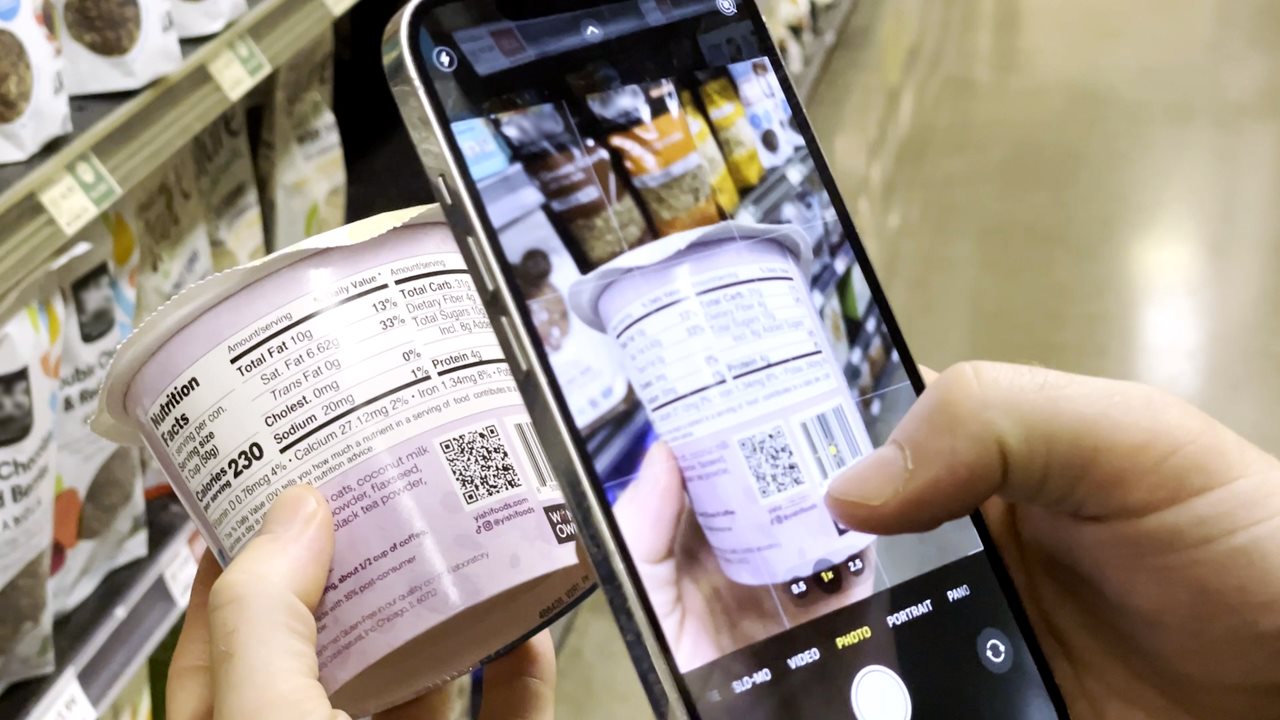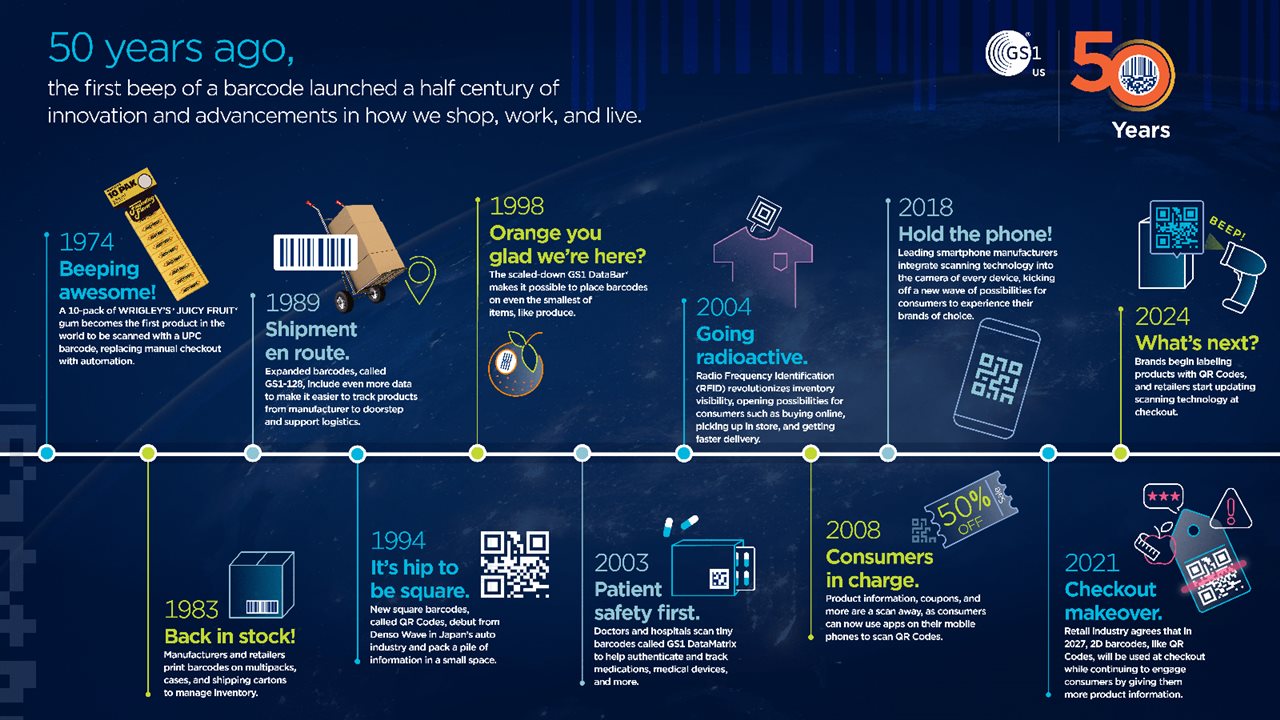(BPT) - Can you imagine (or remember!) how grocery checkout worked before the UPC barcode became commonplace? Clerks read price tags and manually keyed in numbers on cash registers that simply …
This item is available in full to subscribers.
To continue reading, you will need to either log in to your subscriber account, below, or purchase a new subscription.
Please log in to continue |
(BPT) - Can you imagine (or remember!) how grocery checkout worked before the UPC barcode became commonplace? Clerks read price tags and manually keyed in numbers on cash registers that simply counted and managed money. At the same time, long lines of customers often wrapped around the aisles as they waited to buy their groceries.
All of that changed when the retail industry came together seeking a speedier checkout solution, inventing scanning technology and the iconic UPC barcode — a simple set of black lines and spaces that encode product information. The very first barcode scan happened 50 years ago on June 26, 1974, when a 10-pack of WRIGLEY’S® JUICY FRUIT® gum was purchased at a Marsh Supermarket in Troy, Ohio — the same year that the Uniform Code Council, now GS1, was appointed as administrator of the UPC barcode. This event marked the beginning of a new era in shopping.
The UPC barcode revolutionized inventory management and checkout speed, reducing errors and saving time. It enabled retailers to track sales more efficiently, manage stock better and streamline supply chains. Faster checkout meant reduced wait times for shoppers, which became a welcomed improvement in their experience.
Not many technologies have endured for as long as the UPC barcode. Half a century later, it continues serving its limited purpose very well. However, advanced digital technology has led to the development of newer barcodes with exponentially greater data capacity that offers the potential to forever change the way we shop, once again, while better serving the demands of increasingly sophisticated consumers. Enter the almighty QR code.

How many times have you studied a product label only to find little or none of the information you were seeking? Have you ever wished you could quickly access reliable, detailed specifics about a product before you bought it — and after? If so, you’re not alone.
A recent survey by GS1 US, a standards organization best known for administering UPC barcodes, found that 77% of consumers believe product information is crucial when making a purchase. Additionally, 79% are more likely to purchase products with a scannable barcode/QR Code (via smartphone) that provides the additional product information that they would want to see. Yet many have experienced the frustration of shopping with insufficient facts and yearn for better clarity. In an age of digital technology and perpetual connectivity, it’s a reasonable expectation that brands and retailers are eager to meet.


In fact, many brands are creating new ways to provide easy access to the trusted product information shoppers want, exactly when they want it, by upgrading product packaging with new standardized QR codes designed for the digital age. Combining the functionality of QR codes and UPCs, shoppers will increasingly be able to scan these barcodes with their smartphones to get enhanced product information. Additionally, cashiers will soon be able to scan them at their registers, confirming the item and price with the familiar “beep,” since retailers have committed to implement QR code scanning at checkout by 2027. This integration will create a more seamless and enriched purchasing process, aligning with the growing expectations of consumers and current technology.
Brands are increasingly using these QR codes, powered by GS1, on their products to communicate directly with consumers, clearing the way for an entirely transformed future shopping experience to unfold with a myriad of benefits:
1. Transparency and traceability: Want to know where your product comes from? QR codes can reveal a product’s origin, manufacturing process and supply chain details. If you’re prioritizing healthy, ethical and sustainable purchases, this transparency is invaluable for understanding the qualities you care about.
2. Enhanced product information: Scanning a QR code can provide instant access to a wealth of information, including nutritional facts, allergen warnings, user reviews and usage instructions. This helps consumers make better-informed choices, catering to their specific needs and preferences while protecting consumer safety.
3. Shopper perks: Discounted pricing, coupons and other engagement opportunities can be accessed via QR codes. Retail items can be labeled with links to promotions, recipes, instructions for use and more. The possibilities are endless, and progressive brands will soon be leveraging this capability to further solidify consumers’ relationship with their products.
4. Safety and authenticity: Concerned about counterfeit goods? Scanning a QR code can confirm the product’s authenticity, ensuring you’re buying the real deal. This technology is also applied to manage inventory and recalls, minimizing the spread of foodborne illness outbreaks. And if a product is recalled for health or safety reasons, the QR code can be scanned to obtain details, helping you determine whether a product is affected or if it is safe to use.


The Future of Shopping
Much has changed in consumers’ shopping habits, expectations and experiences in recent years. From booming e-commerce to self-checkout lanes and global product sourcing, it’s a new world that’s constantly changing with increased digital information capabilities.
From simple lines and spaces to complex QR patterns, the evolution of the barcode reflects broader technological advancements and a growing emphasis on consumer empowerment. Today’s advanced barcodes can help consumers make better, more-informed purchasing decisions, transforming the way we shop and interact with products.
In a world where knowledge is power, modern barcodes will provide the information you need to shop with confidence and ease, and the benefits of a tech-enabled, always-on, enriched shopping experience will soon be at your fingertips.
For more information, visit www.gs1us.org/50.
